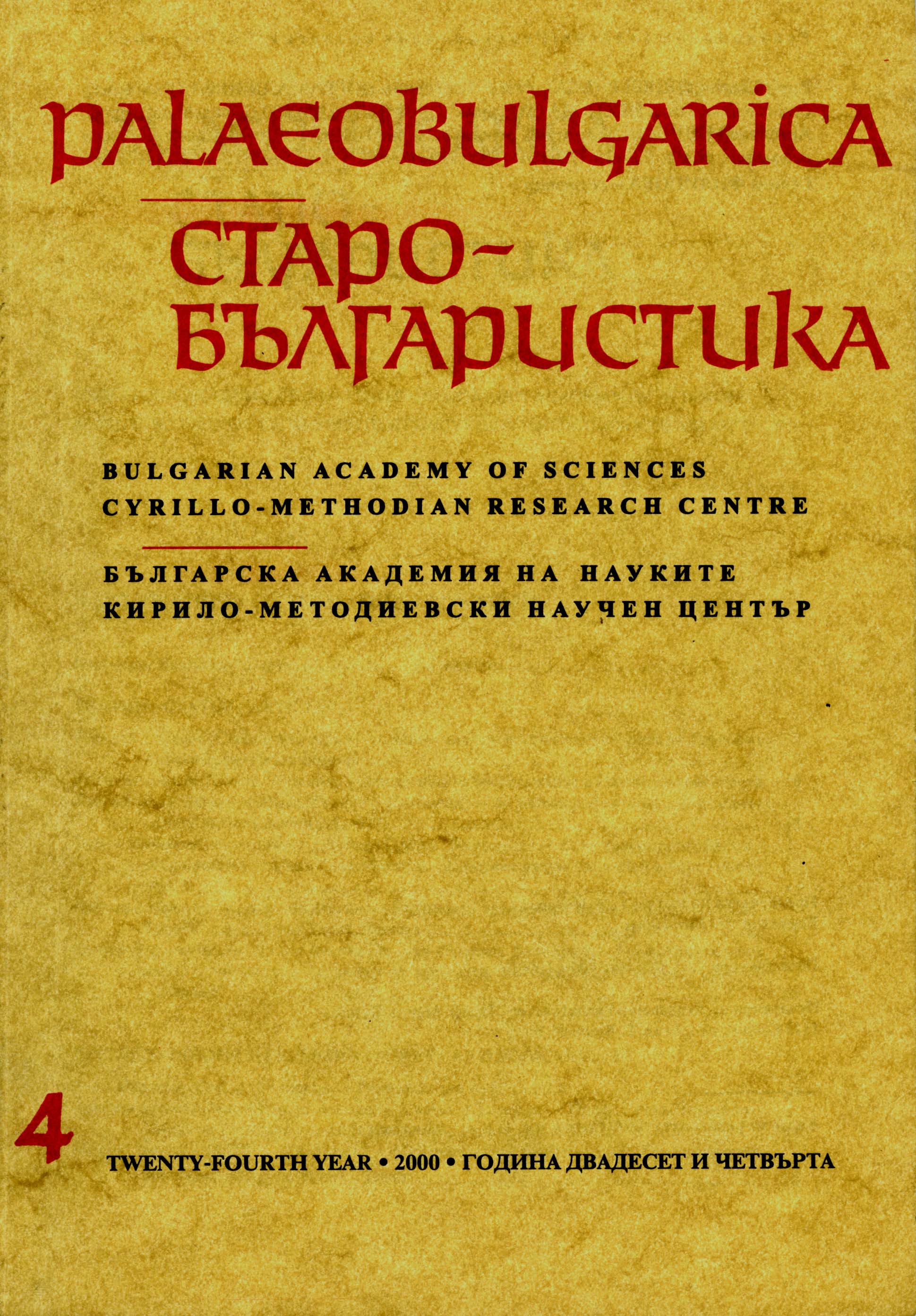Към интерпретацията на съкровището от Надь Сент Миклош – датиране на два таса (№ 9 и 10) с гръцки текст
An Interpretation of the Treasure of Nagiszentmiklosc – Dating of Two Bowls (9 and 10) With a Text in Greek
Author(s): Antoaneta Deleva, Zarko ZhdrakovSubject(s): Fine Arts / Performing Arts, Middle Ages
Published by: Кирило-Методиевски научен център при Българска академия на науките
Summary/Abstract: The golden set consists of various vessels differing in form and function, which proves that the cult was very elaborate. The two travelling bowls correspond to the ritual duality of the set, having semantically similar binary oppositions: man-woman, sun-moon, fire-water. This form exists also in rituals for purification and sacrifice. The inscription in Greek on the bowls throws light on the nature of the ritual. On the basis of the identification of the letter signs we may posit two connected parts of text: ΔΕ ΑΥΔΑ Του ΑΝΑΠΑΥΣΟΝ “And then he said: Rest!” A~EIZS~C +A [len] ΔΙΛΟΝ “1 to 6200 alendilon” (first leap year of the Snake in the proto-Bulgarian calendar). The text could be linked to the fourth commandment (Exodus 20:1, 11; 31:17) – сотр. the Imperative form of the verb 'to rest'. On the other hand this commandment refers to the book of Genesis (2:2-3), where it is said that God rested (from all his work) on the seventh day. The text is quoted in the epistle of Paul the Apostle to the Hebrews (4:4) and it was read during liturgy while blessing the chalice, which could, in fact, mean that the shape of the bowls is that of a church plate, of the type of the collecting plate with a cross and a dedication in the burial of khan Kubrat. The old Bulgarian apocryph “Saga of the Seven Days” could be related directly to the text. On the day when God rested it says: One should not give anything away during this day, but only take. He who makes a treasure during this day will live long. According to the Inframarch Byzantine chronology, the year 6201 corresponds to the leap years 693–694. The year 693 corresponds to the year of the Snake in the proto-Bulgarian calendar, sacralized as state year (сотр. the establishment of Bulgaria in 681 dilon-year), as it appears in the name list of the Bulgarian rulers. At the same time 694 – the year of the Horse is a leap year and is also the year of khan Asparouch (= 'white horse'), which makes it sacred, too. There is a primal sacrifice for the sake of benevolence within the dylom-jubilee year. In connection with the leap year of the leading year of the Horse, all this could refer to the sacral regicide of Asparouch – a certain form of co-ruling with khan Tervel, who took the entire power in 695. This, in fact, could help explain to a great extent the duality of the bowls and of the set as a whole as well as the dedication and its meaning. The runic sign of the ruler, who had made the order and put down a poetical addition in Greek (№ 10), could be read as follows: E[spererich] CAN. ЖОП(а)N ECЛ(o)N “Espererich khan jupan – happiness, goodness”. This is a recollection of the “Happy Prince” in the Hunnic title and of the holy symbol IYI (= iui 'good') of the Bulgarian state.
Journal: PALAEOBULGARICA / СТАРОБЪЛГАРИСТИКА
- Issue Year: 2000
- Issue No: 4
- Page Range: 53-73
- Page Count: 21
- Language: Bulgarian
- Content File-PDF

